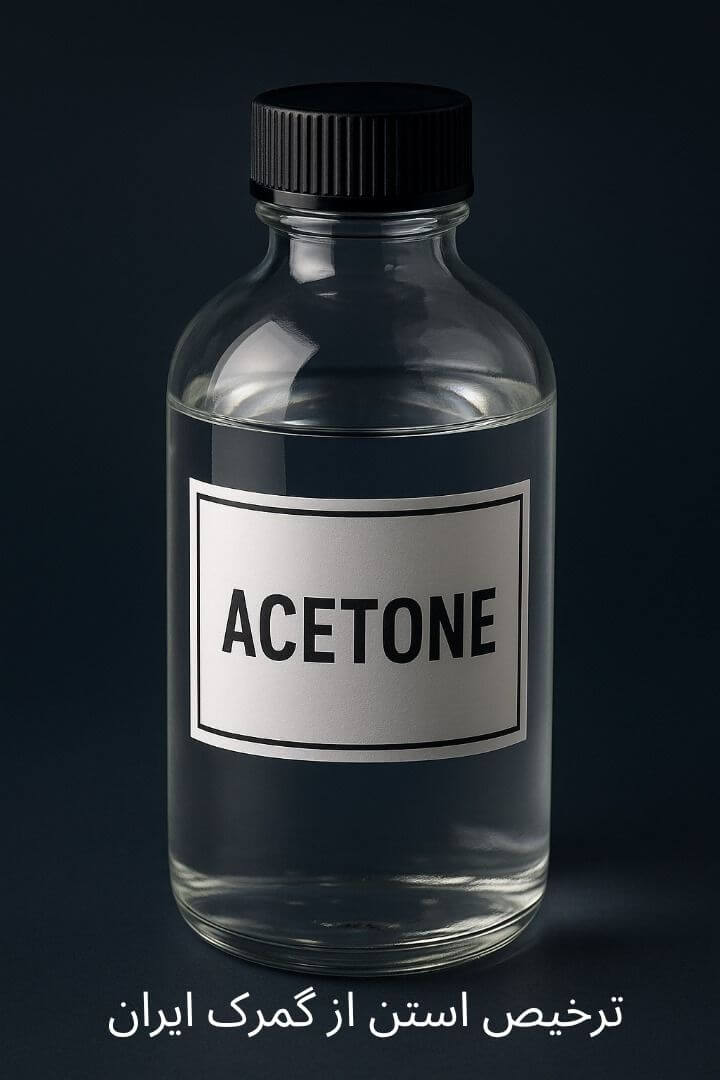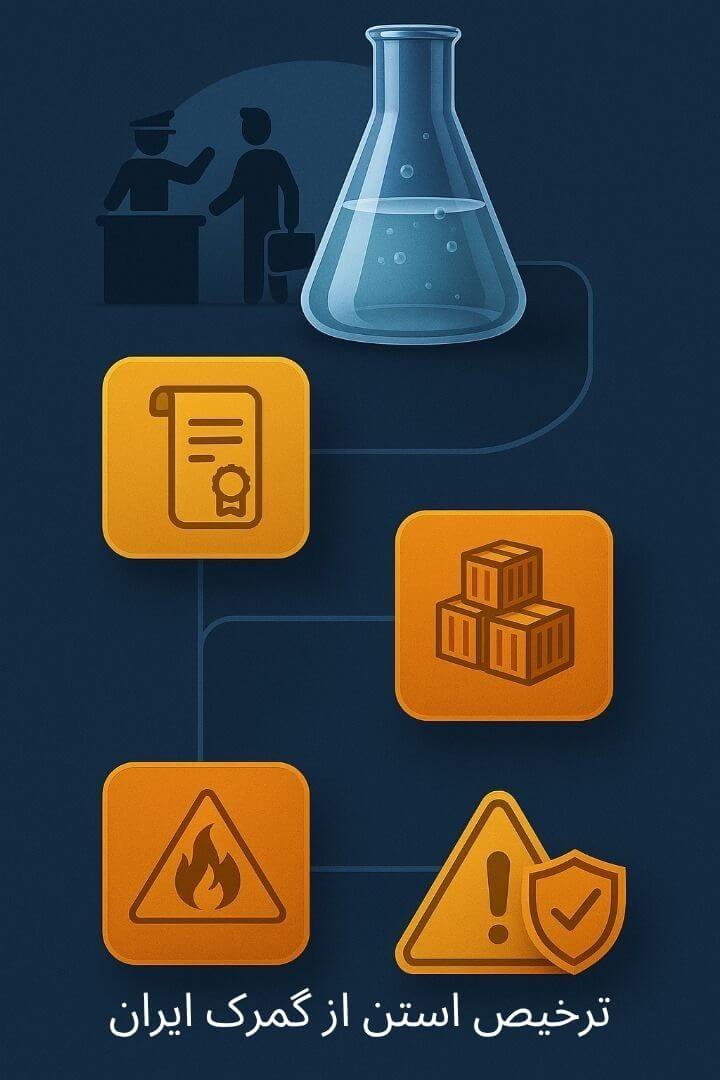Customs Clearance of Acetone in Iran (HS Code + Documents and Permits)

For time and cost estimation of acetone customs clearance, contact the experts at Saba Tarkhis.
Instant Free Consultation1) Main Applications of Acetone
2) Key Points in Acetone Customs Clearance
1. Required Documents for Clearance
Order Registration License: Issued by the Ministry of Industry, Mine, and Trade, confirming the importer is authorized to import the goods and has completed the legal steps.
Commercial Invoice: Must include full purchase details such as price, payment terms, and seller information. This is necessary for accurately calculating customs duties and taxes.
Certificate of Analysis (COA): Issued by the manufacturer, confirming the quality and chemical composition of acetone; in many cases it is among the required documents for clearance.
Bill of Lading: Contains transport details such as the carrier’s name and the type and quantity of the shipment. It serves as proof of ownership for the importer and is essential for clearance.
Import License: Certain chemicals like acetone require special permits. These may be obtained from authorities such as the Ministry of Health or the Environmental Protection Organization, depending on the type and volume of imports.
2. Customs Tariff and HS Code
Customs duty on acetone can vary depending on the country of origin, import volume, and changes in trade policies. Therefore, it is recommended to consult customs brokers or official resources to obtain updated information on tariffs and regulations before importing.
3) Special Conditions for Importing Acetone
Observing safety measures during transport and storage is crucial. For example, acetone consignments must be stored in suitable, well-ventilated places, away from flammable materials and heat sources. Additionally, training personnel in safety and proper handling of chemicals is essential to prevent unforeseen incidents.
Exporters: China, India, South Korea, and the United States are recognized as the largest global producers and exporters of acetone. With large-scale production and high efficiency, these countries account for a major portion of global acetone exports.
Importers: Globally, countries such as Iran, Turkey, Egypt, and several European nations are among the largest importers of acetone. Due to high demand across various industries, these countries account for a significant portion of acetone imports.
4) The Best and Simplest Method to Clear Acetone
Work with reputable customs brokers: As a reputable customs brokerage, Saba can assist you through all legal stages of clearing acetone with a specialized and experienced team. Mastery of customs procedures and regulations enables the brokerage to prepare all required documentation accurately and prevent potential issues.
Prepare complete documentation: Ensuring that all required documents and permits are prepared fully and correctly plays a major role in speeding up clearance. Reviewing documents and ensuring their compliance with legal requirements before import can significantly reduce clearance time and costs.
Stay informed about laws and regulations: Studying and keeping up with the latest customs rules—especially for chemicals—helps importers adopt the best strategies for clearing their goods.
5) Documents Required for Acetone Clearance
| Goods | Short Description | HS Code |
|---|---|---|
| Acetone | Volatile organic solvent; industrial/laboratory | 29141100 |
Final subheading depends on grade, purity, packaging, and end use.
Need precise HS code classification, permits, and document preparation? Our team manages your case end to end.
Request Proforma Invoice
Frequently Asked Questions
What is the HS code for acetone?
Acetone is generally classified under 29141100 (Acetone); final classification depends on technical specifications, purity, and application.
What permits are required to import acetone?
As applicable: permit from the Ministry of Health for safety/health considerations, approval from the Environmental Protection Organization, and compliance with hazardous materials transport requirements (MSDS, labeling).
What are safe transport and storage conditions for acetone?
Store in a well-ventilated area, away from heat and ignition sources; use sealed, resistant containers; keep away from oxidizers and spark sources; train personnel and ensure access to fire-fighting equipment.
Special Customs Clearance Services by Saba Brokerage
As a reputable customs brokerage, Saba offers a wide range of services in customs clearance. These services are designed to support clients at every stage and ensure the process is carried out efficiently and without issues. Below, we detail these services:
Specialized Consulting: Providing technical and legal advice to help clients better understand import/export regulations. This includes analyzing specific client needs and offering appropriate strategies to optimize import and export processes.
Document Preparation: Assisting clients in preparing and organizing the documents required for fast and trouble-free clearance. This includes reviewing existing documentation and ensuring completeness to avoid any delays.
Clearance Process Management: Following all stages of customs clearance, from order registration to receipt of goods from customs. Management is performed using best practices and international standards, with precise and effective control of all stages.
Regulatory Monitoring & Updates: Informing clients about changes in customs laws and regulations. Services include providing up-to-date information, analyzing the impact of legal changes on clearance procedures, and proposing appropriate compliance strategies.
Post-Clearance Services: Providing support after goods are cleared, including following up on potential issues and resolving matters related to the shipment. These services help clients quickly and effectively address any post-clearance challenges.
.png)
